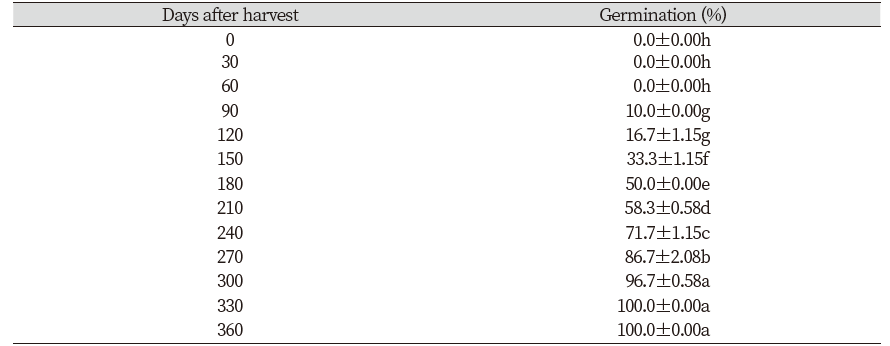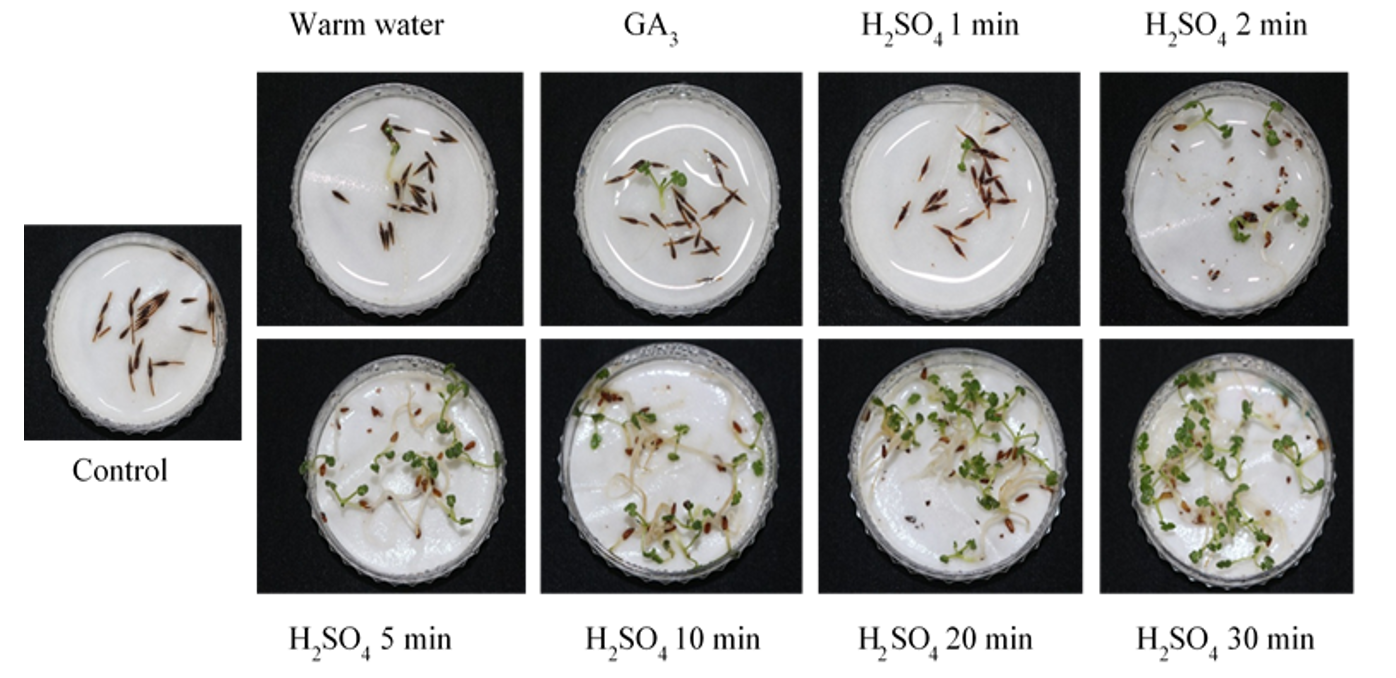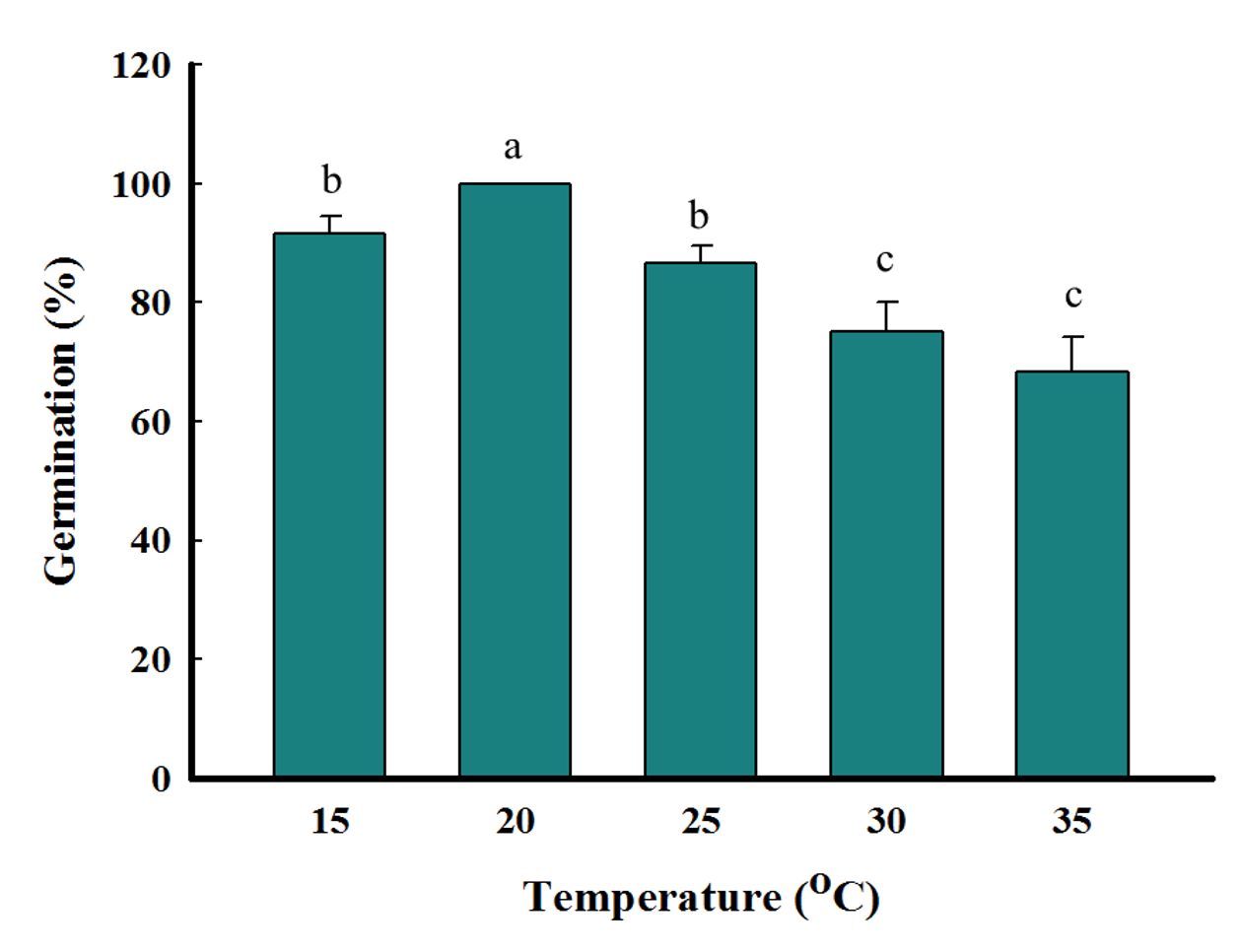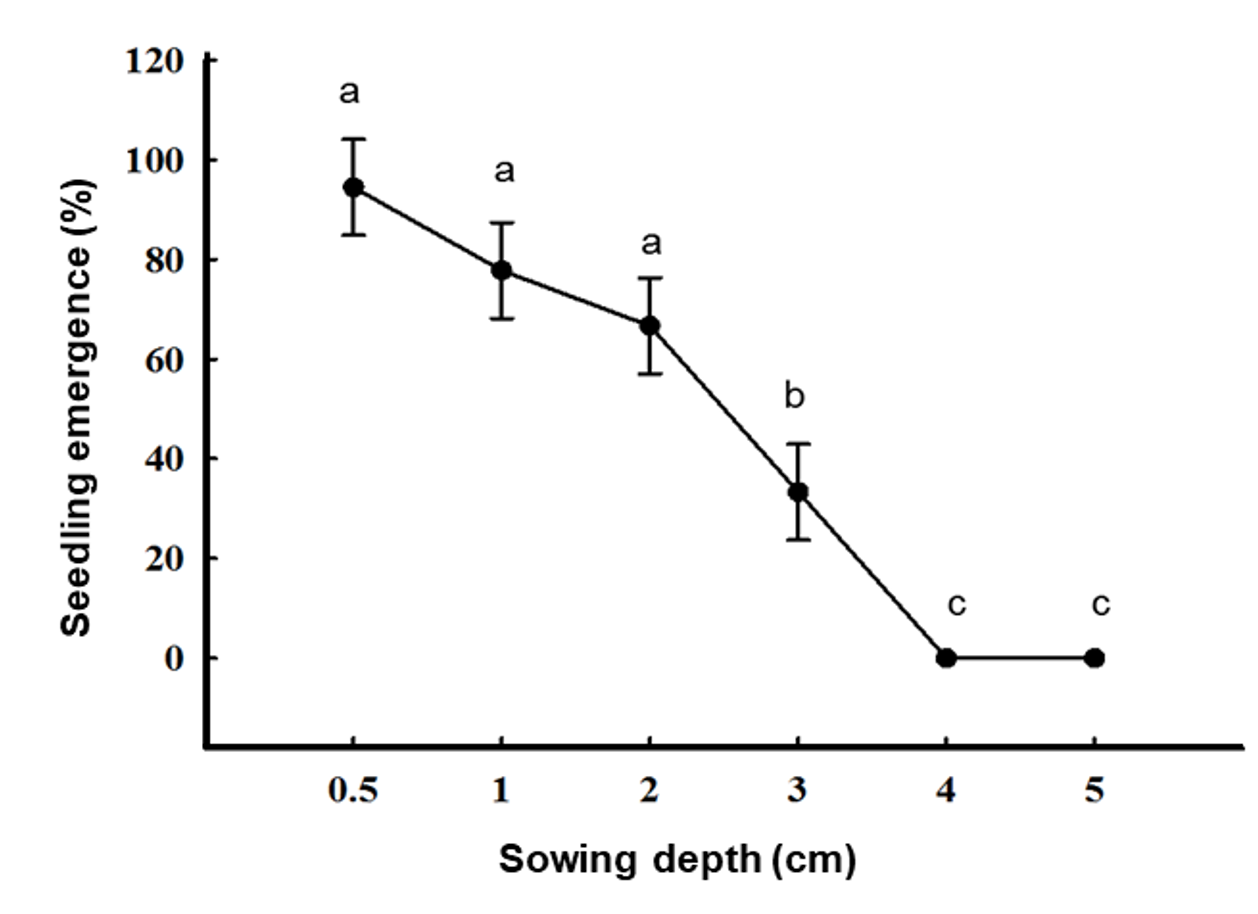Introduction
Many exotic weeds have been introduced artificially or naturally into Korea. Because countries in the world are connected through transportation, trade and travel, chances for invasion of exotic species from one area to another has recently increased dramatically (Kill et al., 2004). Exotic weeds- a plant not native to the continent on which it is now found, which are referred to by several names, which are often used interchangeably: introduced, non-indigenous, alien or foreign species (Meyerson and Mooney, 2007). Exotic weeds present a threat to the economic productivity and ecological integrity of natural systems because of fast growth rate, quick regenerative and reproductive potential. Thus, the accidental or intentional introduction of exotic weeds continues to threaten natural and agricultural ecosystems worldwide.
Erodium cicutarium which is known as red stem filaree, common storksbill, heronsbill, pin-weed, is an annual, winter annual or biennial (Blackshaw and Harker, 1998), originated from Europe (Cox and Conran, 1996; Venter and Verhoeven, 1990). It was initially recorded in Korea before 1993 and it was distributed in Gyeonggi, Chungnam, Gyeongbuk, Seoul, Busan, Daegu, and Jeju (Jung et al., 2017). It occurred from roadsides, riverbanks, rocky places, waste areas, shrub lands, crop fields, gardens usually near the sea (Francis et al., 2012). E. cicutarium prefers dry, sandy soil, and is found in many perennial horticultural crops, turfgrass, and landscapes, in these environments it can threaten crop production and cause economic losses in pastures and forage crops (ISSG, 2013).
Because germination and seedling emergence are the most critical phases in plant development (Larson et al., 2015), as indicated earlier, any information that can be obtained about optimum conditions for germination and establishment of a weed species may assist with designing efficient measures for its control. The main objective of this study was to gather basic information on seed germination and seedling emergence of E. cicutarium to aid in controlling it. Consequently, to measure the effects of storage at room temperature, seed dormancy breaking treatment, optimum temperature, salinity on seed germination, and the effect of burial depth on seed emergence, the seeds of E. cicutarium were subjected to a series of germination trials. Establishing the ecological context of seed germination and the emergence can help to characterize the respective germination niches developed within their natural habitat, and therefore give information on which management actions are likely to assist with control of each variety in an agricultural or conservation setting.
Materials and Methods
Distribution of E. cicutarium in Chungnam province of Korea
Many alien plants have naturalized in Korea and they can easily spread into the whole country. To control alien plants, it is essential to know their geographical distribution as well as their biological characteristics. This study was conducted to investigate the distribution of E. cicutarium at 18 cities in Chungnam province of Korea. Populations of exotic weeds were surveyed at 132 sites that could be described as upland, orchard, and pasture. The distribution characteristics of E. cicutarium and regions were analyzed based on the survey data, and the spatial and regional distributions were analyzed using the recorded GPS data. A distribution map of E. cicutarium was prepared using QGIS (v2.18.13, https://www.qgis.org).
Effect of environmental factors on seed dormancy and germination
Dormancy of E. cicutarium seeds after harvest
Storage at room temperature was used to test effect of laboratory conditions on the dormancy behavior of seed. Retrieved monthly for seed germination tests beginning after harvest (0 to 360 days after harvest).
Seed dormancy breaking treatment
Several artificial methods have been used to break the dormancy of these seeds, including physical and chemical methods. In this study, warm water (55℃), GA3 (100 ppm) and sulphuric acids (H2SO4) were used as different dormancy breaking treatments. Seeds were placed in a 60×15 mm plastic petri dish containing two filter paper disk moistened with 5 mL of distilled water. The dishes were sealed with a parafilm and placed in a germinator set at 20-25/10-15℃ (day/night), 16/8 h light/dark. Replications were conducted in triplicate.
In the next part is effect of acid scarification (increase in duration of treatment) on germination of seeds of E. cicutarium. The acid used were concentrated (sulphuric acids H2SO4, nitric acids HNO3 and hydrochloric acid HCl) with varying lengths of time (35, 40, 45, 50, 55, 60 minutes) and washed in running tap water before placing in petri-dished for germination. Seeds were placed in a 60×15 mm plastic petri dish containing two filter paper disk moistened with 5 mL of distilled water. The dishes were sealed with a parafilm and placed in a germinator set at 20-25/10-15℃ (day/night), 16/8 h light/dark.
Germination by temperature
Seeds were placed on a Petri-dish with water and filter paper. The Petri-dish were placed into a Growth Chamber under 16/8 h (day/night) photoperiod. Germination temperatures were 15, 20, 25, 30, and 35℃ as day time and night time were 5, 10, 15, 20, 25ºC, respectively. There were three replications, and the final germination percentage was determined at seven days after sowing (DAS).
Salt stress
To investigate the effect of salinity on germination of seeds, different concentrations of NaCl solution (0, 10, 20, 40, 80, 160, and 320 mM) were applied in the germination test. Seeds were incubated on two layers of filter paper in a Petri dish (60×15 mm), to which 5 mL of NaCl were added. For each of these trials, the treatment with sterilized distilled water was included as a control. All petri dishes were placed in an illuminated incubator subjected to a 16h daily photoperiod at 20-25/10-15℃ (day/night).
Emergence by burial depth
Seeds were sown into a 7 cm diameter plastic pot filled with mixed soil (1:1 [w/w]) of horticultural nursery soil: Rice nursery soil. Burial depths were 0.5, 1, 2, 3, and 4 cm and replications were three. Plastic pots were putted in a greenhouse at 16 h daily photoperiod at 20-25/10-15℃ (day/night). At 21 DAS, the number of seedlings was measured.
Results and Discussion
Distribution of E. cicutarium in Chungnam province of Korea
Most introduced species have a restricted distribution in Chungnam province of Korea compared with native weeds. By surveyed and monitoring E. cicutarium in crop fields, orchards, pastures, roadsides, and river banks from 2018 to 2019. A total of 132 sites, there were three sites of occurrence of E. cicutarium and concentrated distributed in Nonsan-si, Chungcheongnam-do, Korea. The long-distance dispersal, however, is likely since their distance of launches seeds up to half a meter (Harmon and Stamp, 1992), suggesting that the weed is possible spreading from these regions to other environs. Various aspects of climate change, such as the average increase of winter temperatures would enhance the dispersion of exotic and winter annual weeds like E. cicutarium. This phenomenon will be more serious and unexpectable. Therefore, regular monitoring of the weeds flora in agro-ecosystem could be suggested as a basic precaution to prevent the worst situation (Fig. 1).
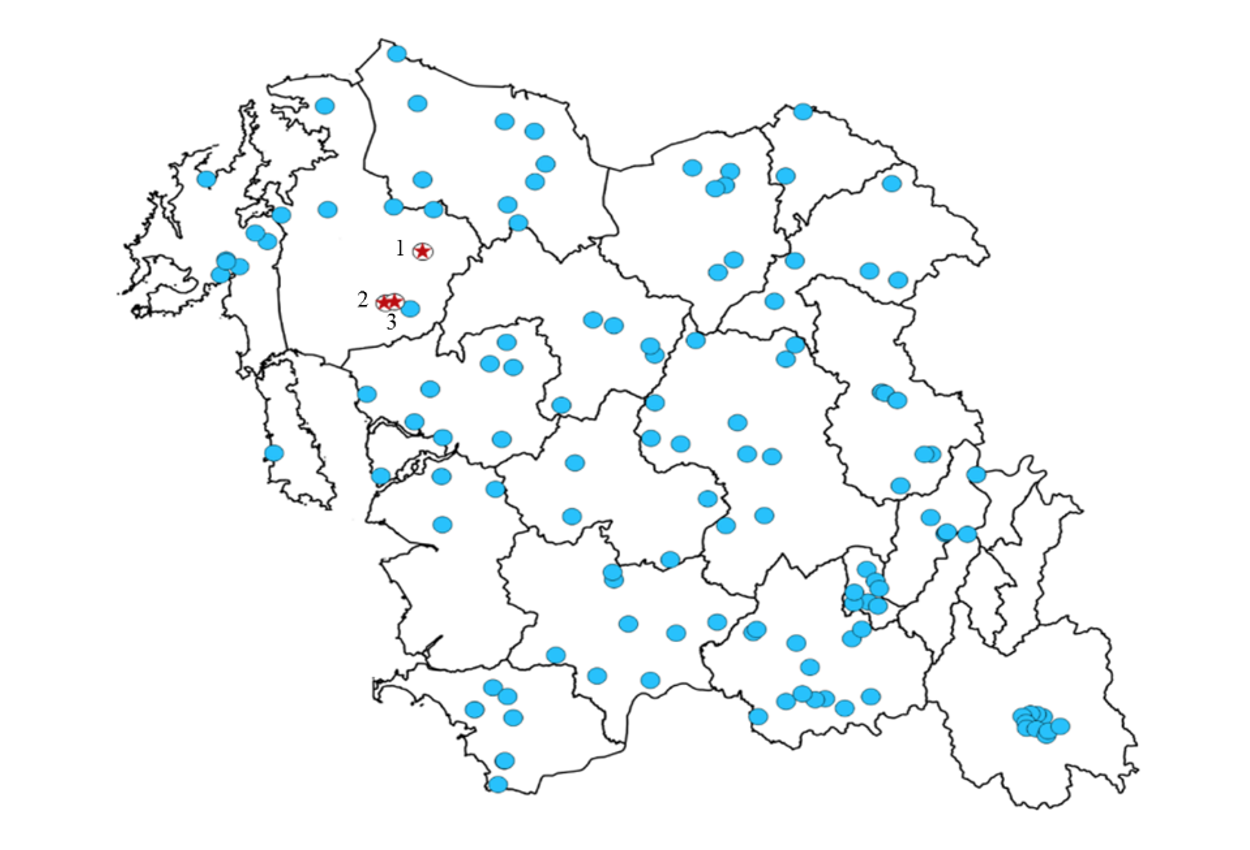
Fig. 1.Map of survey sites in Chungnam province of Korea. The star in a circle symbol in the map refers the place where Erodium cicutarium exists (1) N36°45'56.1'', E126°33'46.7'': Haeun-ro, Unsan-myeon, Sosan; (2) N36°41'32.6'', E126°30'28.3'': 295-27 Sinjeong-ri, Gobuk-myeon, Sosan; (3) N36°41'39.5'', E126°31'17.6'': 864-3 Namjeong-ri, Gobuk-myeon, Sosan;
Effect of environmental factors on seed dormancy and germination
Dormancy of E. cicutarium seeds after harvest
E. cicutarium seed germination increased with increasing storage time during whole year after harvest. No germination was found until 60 days after harvest, and began to germinate 90 days after harvest and got reaching full germination 300 days after harvest (Table 1).
Seed dormancy breaking treatment
In this study, the degree of dormancy breakdown was investigated. The hot water treatment and gibberellin given to the seeds were not as effective as acid scarification in breaking seed dormancy. Gibberellin when immersed in 100 ppm and warm water for 24 hours, the germination percentage of E. cicutarium seeds were only 1.7 and 1.67%, respectively, and there was no significant difference with untreated control. The germination percentage of E. cicutarium seeds increased with increasing time immersed in sulfuric acid. When immersed in sulfuric acid for 5, 10, 20, and 30 minutes, the germination percentage was 80-100%. It was judged that 20 minutes was the most suitable time (Table 2; Fig. 2).
Acid treatment is reported to bring about softening of hard seed coat by dissolution of deposited lipids, pectic substances and high density waxes, which is a common cause for hard seededness. This, in turn, makes the seed permeable to water and gases and induces germination. In this present study, there was an increase in percentage germination with increase in immersion period of seeds in acids. Treatments with the three acids (sulphuric acids H2SO4, nitric acids HNO3 and hydrochloric acid HCl) were effective in breaking seed dormancy. However, the treatments with sulphuric and nitric acids were more effective than hydrochloric acid. Acid scarification has been used by a number of researchers to break dormancy in seeds. Beyond a certain length of time in acid, the seeds are damaged. Fifty-five and sixty minutes for treatment in hydrochloric and nitric acids resulted in no germination, suggesting death of all seeds, while sixty minutes for treatment in sulphuric acid resulted in 85% germination (a drop of 10% compared with the fifty-five minutes for treatment). The varying rate of penetration of different acids into the seed to cause damage to the embryo may be attributed to the nature of the chemical reaction between the acid and the chemical constituent of jelly-like substance surrounding the embryo (Table 3).
Germination by temperature
The optimum germination temperature was 20℃. On the other hand, it can be confirmed that the germination power decreases at temperatures higher than 25℃, by showing a low germination percentage 30℃ (75%), 35℃ (68.33%). However, at 15℃ and 25℃, the germination percentage were similar and no significant difference (Fig. 3).
Salt stress
In this study, germination of E. cicutarium seeds was decreased by increasing NaCl concentrations. Up to 10 mM of NaCl did not affect E. cicutarium seed germination and less than 20% of seeds germinated at 160 mM of NaCl. The inhibition of germination could be due either to NaCl-induced seed mortality, or to unfavorable external conditions. The toxic effect of NaCl was observable only at the highest concentration, and affected the seeds (Fig. 4).
Emergence by burial depth
The depth of sowing seeds is important, too shallow sowing results in poor germination due to inadequate soil moisture at the top soil layer. Deep sowing can also significantly reduce crop emergence. In this study, effect of sowing depth on E. cicutarium seedling emergence was significant. Seedling emergence decreased markedly in parallel with increasing seed sowing depth. Approximately, 78% of seeds emerged at 0.5-2 cm of sowing depth but the seeds did not emerge at a burial depth greater than 4 cm (Fig. 5).
Conclusion
Our results suggest that the seed germination of this species requires low soil salinity, moderate temperatures. The seeds enter dormancy until two month after harvest and soaking in the sulfuric acid for 20 minutes was the most suitable method to break seed dormancy. Emergence decreased progressively with increasing depth of burial and was completely inhibited at 4 cm. These results will be useful to develop integrated exotic weed management in the E. cicutarium infested area in Korea.
Acknowledgements
This work was carried out with the support of the “Cooperative Research Program for Agriculture Science & Technology Development (Project No. PJ01321601)” Rural Development Administration, Republic of Korea.
Authors Information
Thi Hien Le, Chungnam National University, Ph.D. student
Taehyun Oh, Chungnam National University, Master student
Aung Bo Bo, Chungnam National University, Ph.D. student
WeiQiang Jia, Chungnam National University, Researcher
Kwang Min Cho, Daeseung Bio Farm Research Institute, Researcher
Kee Woong Park, Chungnam National University, Professor

